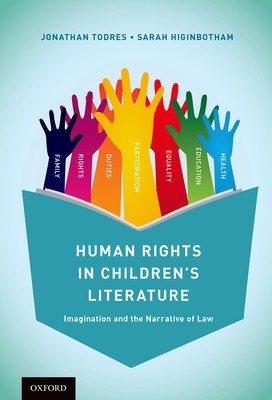
- We will send in 10–14 business days.
- Author: Jonathan Todres
- Publisher: Oxford University Press, USA
- ISBN-10: 0190493186
- ISBN-13: 9780190493189
- Format: 15.5 x 23.4 x 2 cm, minkšti viršeliai
- Language: English
- SAVE -10% with code: EXTRA
Reviews
Description
How can children grow to realize their inherent rights and respect the rights of others? In this book, authors Jonathan Todres and Sarah Higinbotham explore this question through both human rights law and children's literature. Both international and domestic law affirm that children have rights, but how are these norms disseminated so that they make a difference in children's lives? Human rights education research demonstrates that when children learn about human rights, they exhibit greater self-esteem and respect the rights of others. The Convention on the Rights of the Child -- the most widely-ratified human rights treaty -- not only ensures that children have rights, it also requires that states make those rights "widely known, by appropriate and active means, to adults and children alike." This first-of-its-kind requirement for a human rights treaty indicates that if rights are to be meaningful to the lives of children, then government and civil society must engage with
those rights in ways that are relevant to children.
EXTRA 10 % discount with code: EXTRA
The promotion ends in 22d.00:10:08
The discount code is valid when purchasing from 10 €. Discounts do not stack.
- Author: Jonathan Todres
- Publisher: Oxford University Press, USA
- ISBN-10: 0190493186
- ISBN-13: 9780190493189
- Format: 15.5 x 23.4 x 2 cm, minkšti viršeliai
- Language: English English
How can children grow to realize their inherent rights and respect the rights of others? In this book, authors Jonathan Todres and Sarah Higinbotham explore this question through both human rights law and children's literature. Both international and domestic law affirm that children have rights, but how are these norms disseminated so that they make a difference in children's lives? Human rights education research demonstrates that when children learn about human rights, they exhibit greater self-esteem and respect the rights of others. The Convention on the Rights of the Child -- the most widely-ratified human rights treaty -- not only ensures that children have rights, it also requires that states make those rights "widely known, by appropriate and active means, to adults and children alike." This first-of-its-kind requirement for a human rights treaty indicates that if rights are to be meaningful to the lives of children, then government and civil society must engage with
those rights in ways that are relevant to children.


Reviews